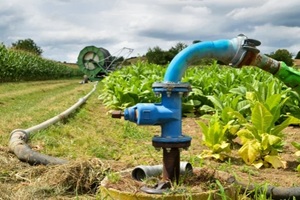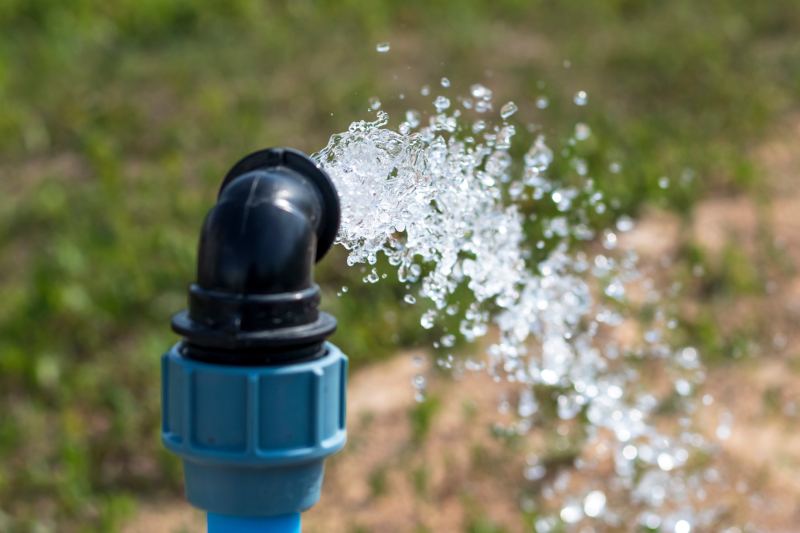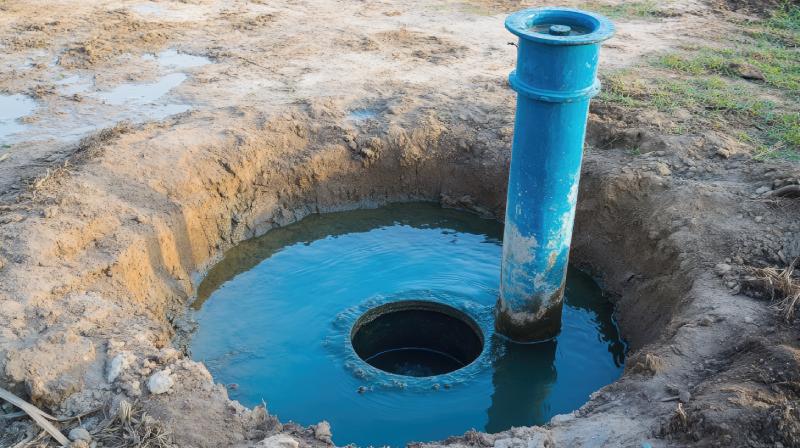
If your goal is consistent water pressure and performance, the size of your submersible well pump must be carefully matched to meet your needs. If the pump is too small, it won’t keep up with demand. If it’s too large, it can overwork your system and ultimately shorten its lifespan.
A properly sized pump keeps water flowing efficiently to your fixtures, appliances, and irrigation without straining the well or the equipment. Knowing the peak water use of your household, well yield, and pressure requirements helps sizing and sets the foundation for a dependable and long-lasting system.
Determining Your Water Needs
The first step in sizing a submersible well pump is to determine how much water is used during peak times. This refers to the highest expected demand during short periods, typically in the morning or evening, rather than average daily use.
One method of estimating water needs involves counting all the fixtures in the home. Each faucet, shower, toilet, and appliance contributes to the total gallons per minute (GPM) required.
For example, a typical home with two bathrooms, a kitchen sink, dishwasher, washing machine, laundry tub, and two hose bibs would need a pump capable of delivering at least 12 GPM to match the number of fixtures.
Another way to estimate demand is by calculating usage during a seven-minute peak period to reflect how water is commonly used in a household, with multiple outlets running at once. A single bathroom can draw around 45 gallons during peak use, while two bathrooms may require as much as 98 gallons, which translates to a pump capacity of around 14 GPM.
Matching the pump’s flow rate to the actual peak demand avoids underperformance and helps prevent excessive wear from constant cycling.
Sizing Based on Well Yield and Pressure Needs
Pump size must also match the production capacity of the well itself, as installing a pump with greater capacity than the well can deliver risks running the system dry and damaging the pump. The goal is to find a balance where the pump meets water use needs without exceeding the yield of the well.
In situations where household demand is greater than the available flow from the well, additional water storage is often the best solution. A large pressure tank can store water and reduce how frequently the pump turns on and off. Less cycling increases the lifespan of the pump and maintains more consistent water pressure.
Pressure requirements play an equal part in proper pump selection, and water must reach the highest and farthest outlet in the home with enough force to function properly. While your dishwasher may run fine on 10 psi, a lawn sprinkler setup could need as much as 40 psi to function properly.

In most residential systems, pressure settings fall between 30 to 60 psi. Distance from the pump, elevation changes, pipe size, and water treatment equipment all influence how much pressure is needed.
Older plumbing systems with buildup inside pipes may increase friction loss, requiring a higher pressure setting to deliver the same performance. The presence of water softeners or filtration systems also introduces a pressure drop that must be factored in.
A practical approach is to aim for 20 psi at the farthest fixture while water is actively flowing. That baseline helps keep all systems functioning smoothly even when multiple outlets are in use.
Choosing the Right Pump
Sizing a submersible pump goes beyond pressure and flow. Also consider the reliability of the pump, overall efficiency, installation space, and long-term operating costs when sizing.
Common types include jet, submersible, and reciprocating pumps. For deep wells, submersible models are often the most effective. These are installed deep in the well and push water to the surface with a motor that operates underwater. The pump and motor together form a single unit, which is then connected to the pressure tank system in the home.
In some cases, a single pump may not be enough, and when a well has a low yield and peak demand is high, a two-pump setup may be used. The primary pump fills an atmospheric storage tank, and a second, shallow well pump moves water from that tank into the pressure system of the home. Using this setup helps meet household demand without stressing the well or the pump.
Several practical factors come into play during the final pump selection, including the cost of the pump and installation, available power supply, space limitations, and ease of servicing. Installation materials like piping, fittings, and accessories also affect the total cost and performance.
Pumps that are energy-efficient and easy to maintain may offer long-term savings, especially for homes that rely heavily on well water every day.
Matching the pump to both the well and the plumbing system of the home requires a thoughtful approach. The ideal setup delivers consistent water pressure, handles peak use comfortably, and runs efficiently over the long term.
Get the Right Fit for Your Water System

Sizing your well pump requires real measurements, smart planning, and an experienced hand to match the right equipment to your property. A properly sized pump keeps everything running efficiently, reduces wear on your system, and helps avoid the frustrations of inconsistent water pressure or supply interruptions.
Backed by 30+ years of real-world experience, Tri-County Pump Service, Inc. consistently delivers dependable well water solutions. No matter if you’re working on a new system, improving an existing one, or fixing water supply problems, our team is here to support you.
If you’re unsure what size well pump is right for your home, let us take the guesswork out of it and make things simple. Call us at 1-(301)-432-0330, use our online contact form, or schedule a service directly through our website to get started.



